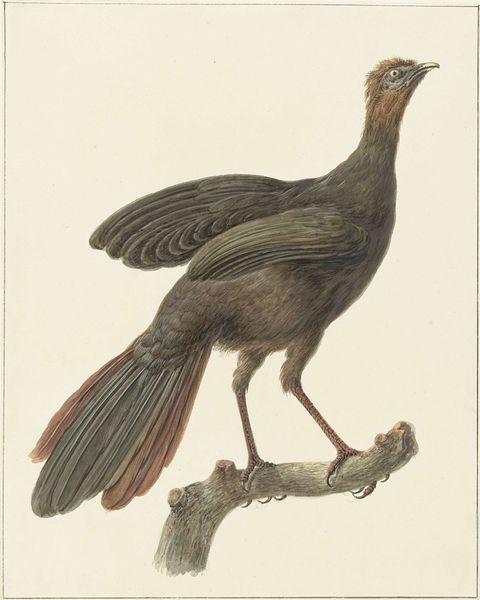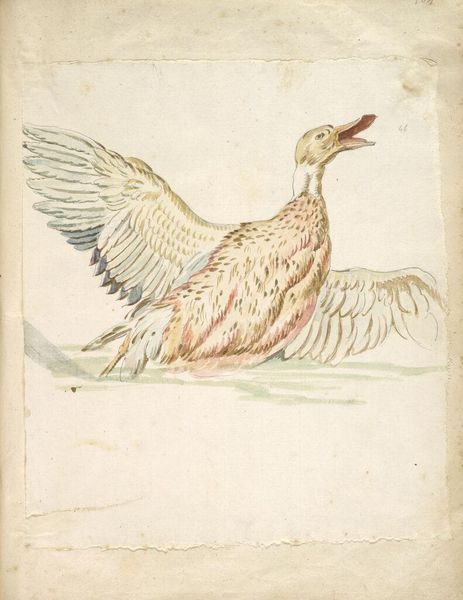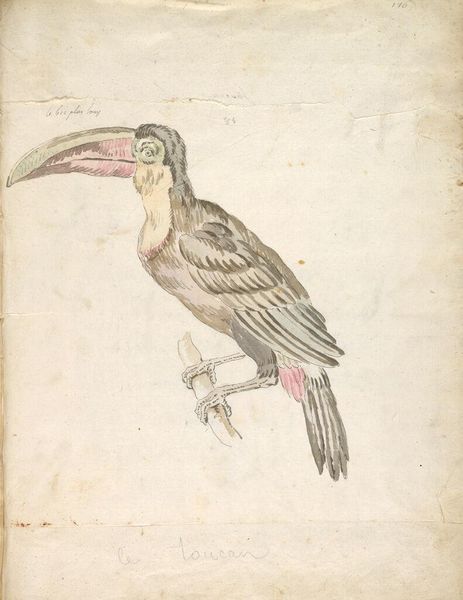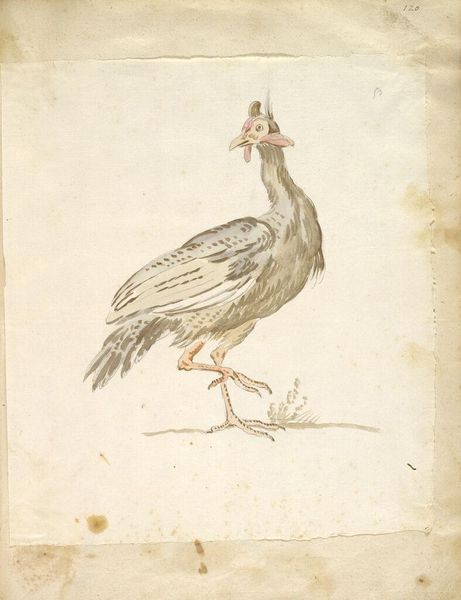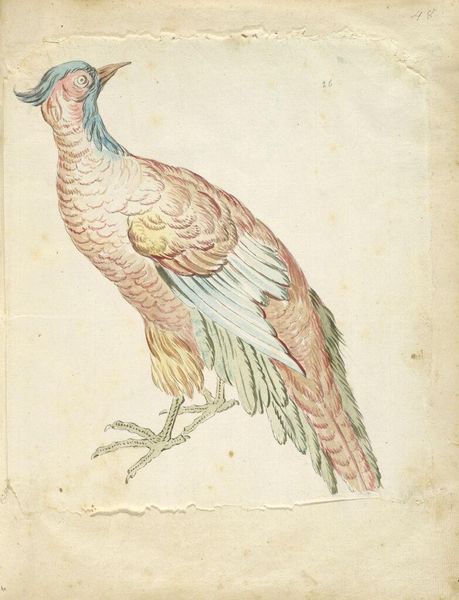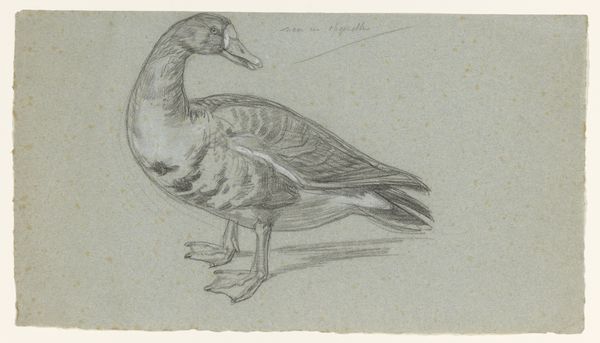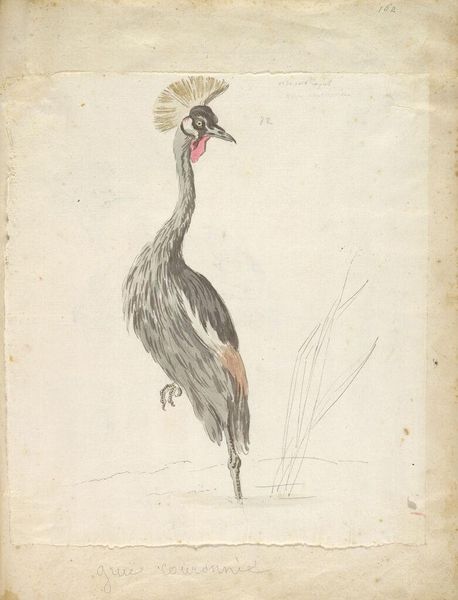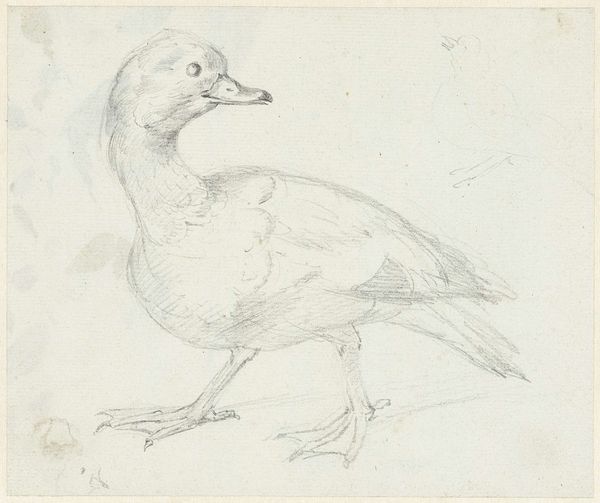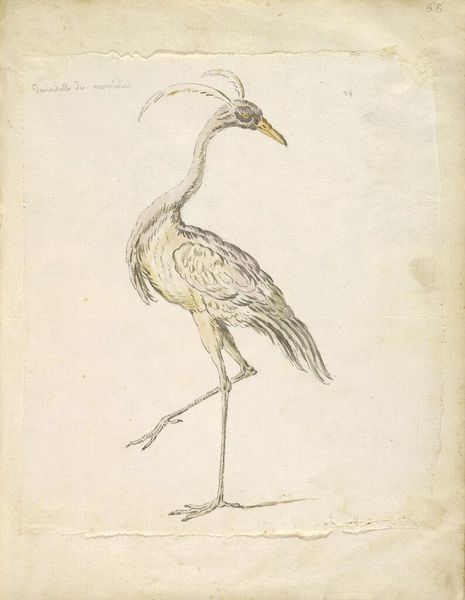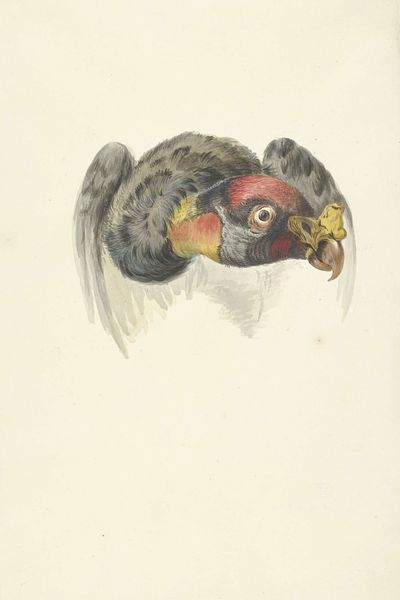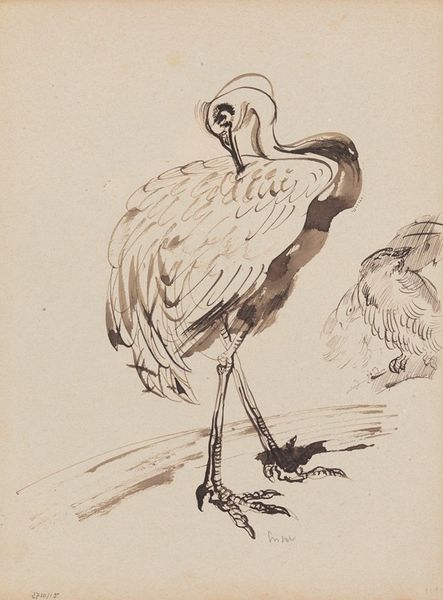
drawing, paper, watercolor, pencil
#
drawing
#
light pencil work
#
pencil sketch
#
landscape
#
figuration
#
paper
#
personal sketchbook
#
watercolor
#
ink drawing experimentation
#
pen-ink sketch
#
pencil
#
sketchbook drawing
#
pencil work
#
watercolour illustration
#
sketchbook art
#
fantasy sketch
Dimensions: height 272 mm, width 232 mm
Copyright: Rijks Museum: Open Domain
Curator: This small piece, made with pencil and watercolor on paper, comes to us from Theo van Hoytema and is called "Dood vogeltje (patrijs?)" Or, "Dead Bird (Partridge?)" It was made sometime between 1873 and 1917 and it just emanates...quiet. Editor: Quiet, yes, but tinged with such...delicate sorrow. It's not just the bird being dead, but the tentative, almost unfinished quality of the sketch. The off-white of the page enhances that feeling somehow, adding to this fragile sense. Curator: Fragile indeed. You can almost feel Hoytema's hand pausing, hesitant to fully capture the stillness of death. It has that private sketchbook feeling about it, wouldn’t you agree? Like catching a fleeting moment. The quick strokes capturing the bird's form are so revealing. Note the details in the wings, compared to the soft lines that describe its body... Editor: And how the linear framework contradicts tonal renderings of color, specifically the monochromatic variations in browns, sepias, and umbers? There's tension between pure visual analysis and a nascent symbolism, this dialogue between structure and subjective response... Hoytema shows how color determines shape and light, but the sketch feels oddly unresolved—unfinished—with its lines and washed pigments that, again, trigger emotional responses! Curator: Exactly! And for me that unresolved feel opens space for me to imagine. I can project any old meaning onto it. For example, perhaps it is about the impermanence of life...but it doesn’t scream with the urgency, it’s whispering instead. It is lovely. But it is sad. Do you feel sad, seeing it? Editor: In truth, not overwhelmingly. Its sadness strikes me more as observational. But, yes, certainly a contemplative, perhaps empathetic stillness does pervade. Still, it is really more the structure that appeals; those gorgeous and incredibly sensitive lines suggesting mass and motion even as they fail to coalesce into solidity. Curator: It is so revealing, looking at art with you: You really open my mind to considering things from new points of view. And even when you approach from an almost…analytical perspective I come to a much greater level of understanding. It enhances the way I approach similar artworks in the future. Editor: The pleasure is mine, believe me. Each exchange, especially over these shorter sketches, always highlights unseen facets, enriching our understanding—or, at least, enriching my own. It all contributes something to how we see the artwork; for example I am thinking of this piece more empathetically now.
Comments
No comments
Be the first to comment and join the conversation on the ultimate creative platform.


